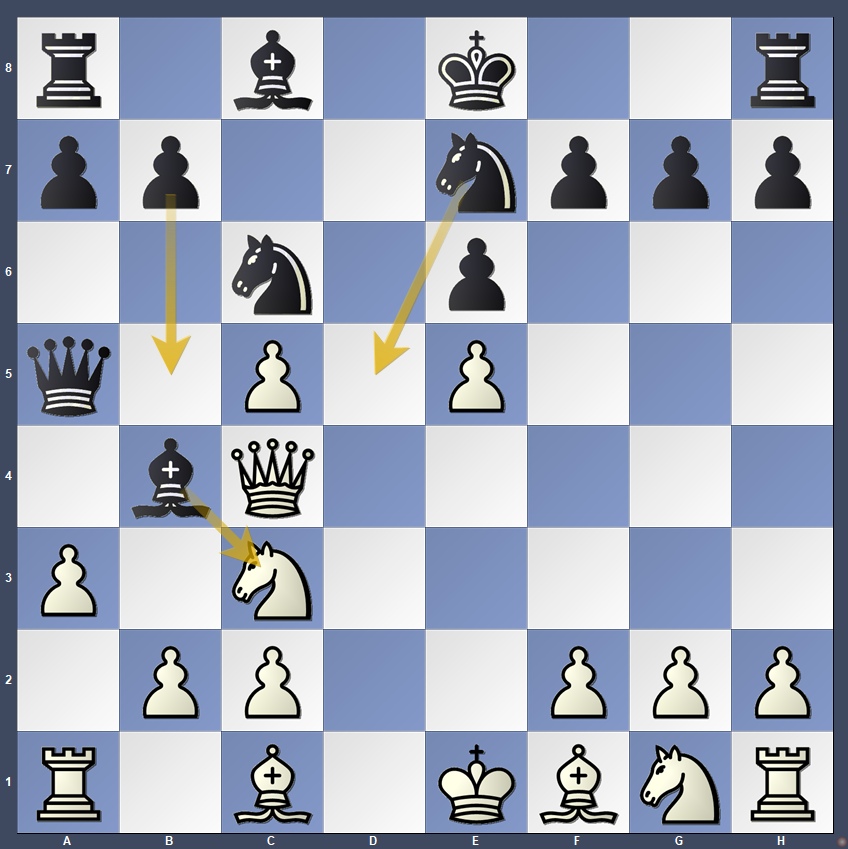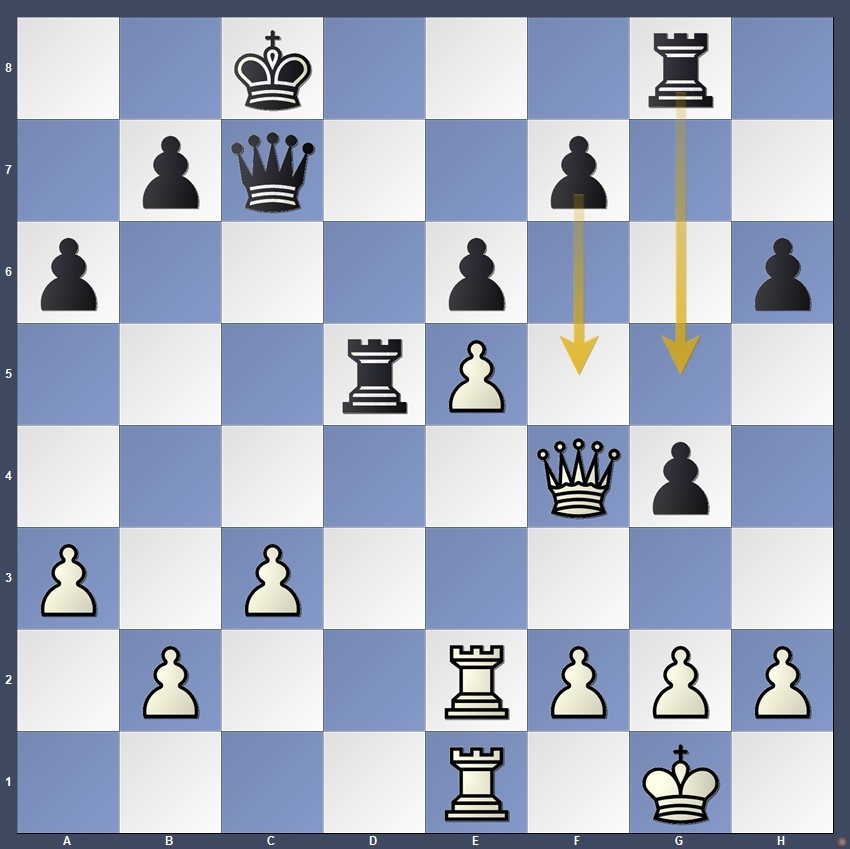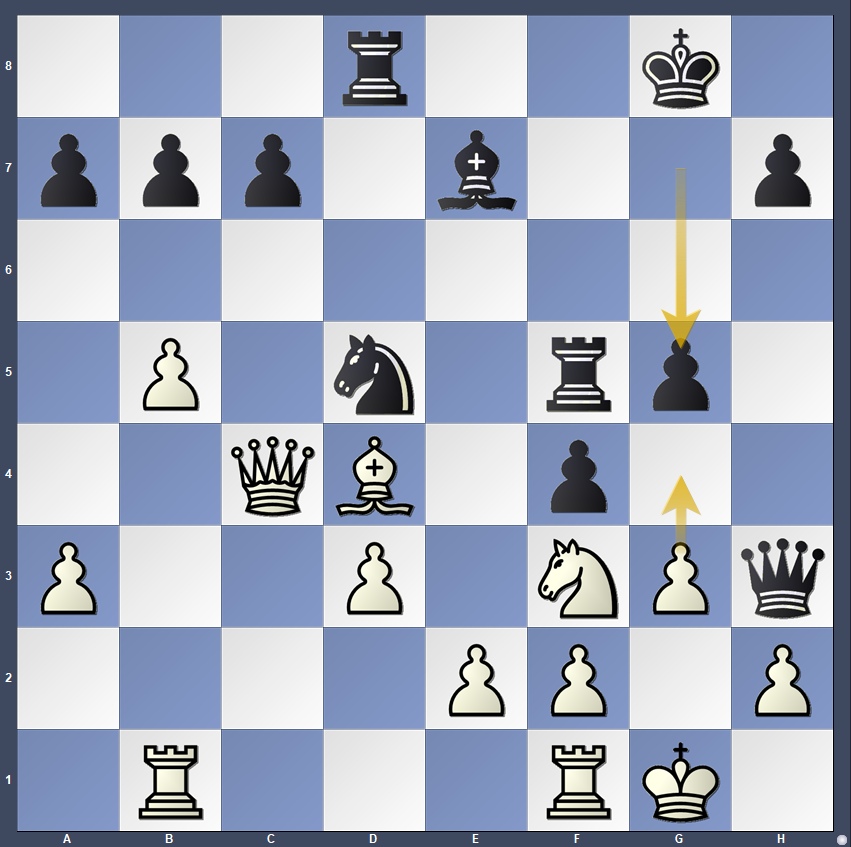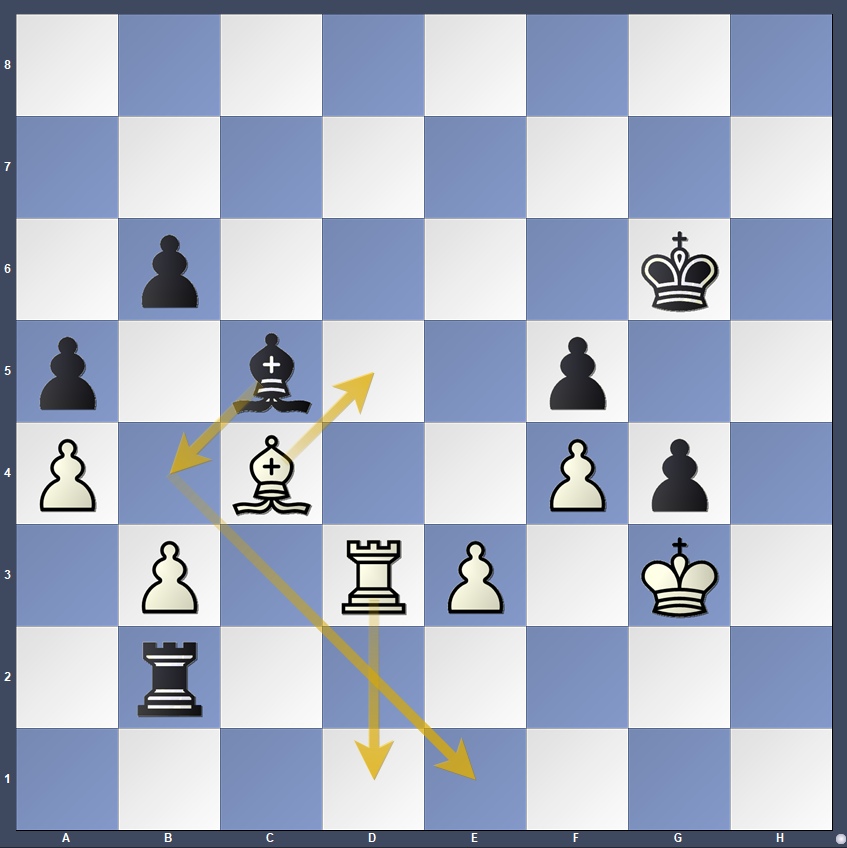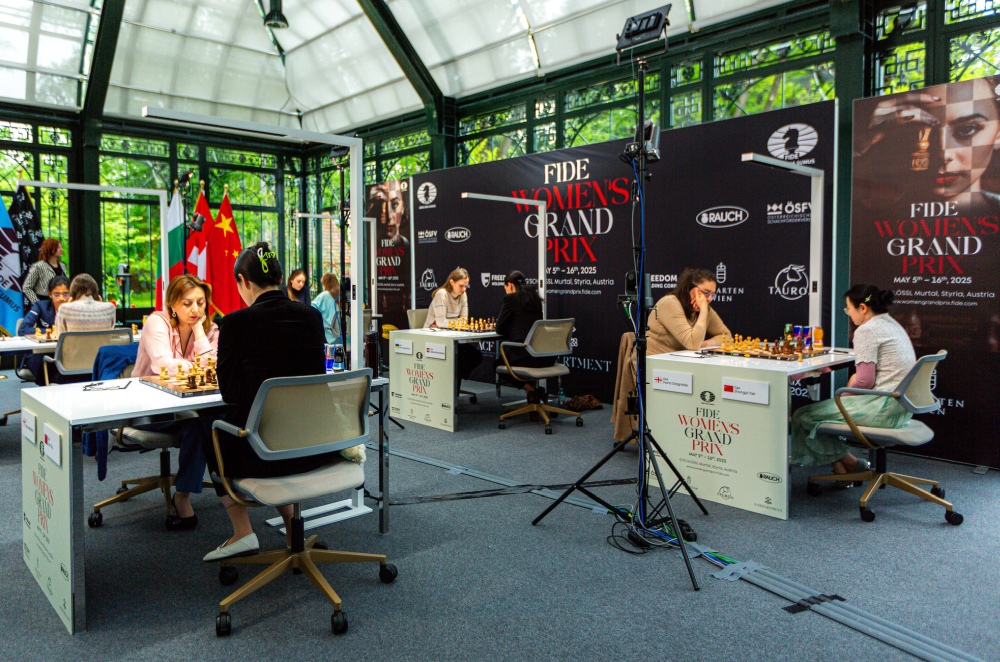
Ukrainian Anna Muzychuk had a great showing against the former Women’s World Champion Alexandra Kosteniuk, taking her to 3.5/4 and a sole lead in the tournament. Out of five games, three saw players making or offering a pawn sacrifice.
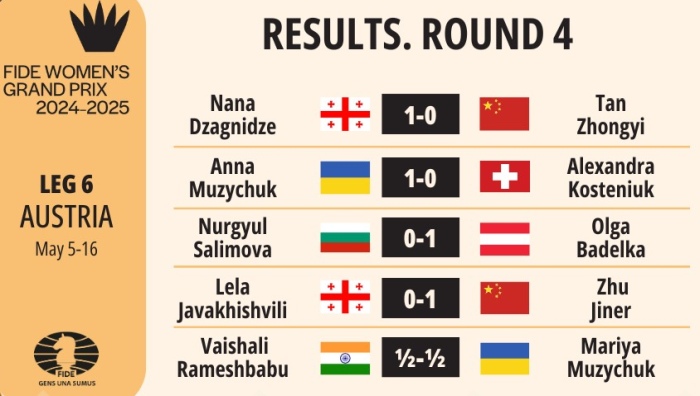
Round four of the final stage of the 2024/2025 FIDE Women’s Grand Prix was marked by fast games and questionable pawn sacrifices. As it turned out, those who accepted the pawn offer – such as Dzagnidze (playing as White against Tan) and Badelka (playing as Black against Salimova), won. Vaishali Rameshbabu, who declined a free pawn from Mariya Muzychuk, was left defending a draw.
Nana Dzagnidze’s game against former Women’s World Champion Tan Zhongyi stood out with its sharp moves and impressive tactics. After securing a win as White, Nana is now alone in third place. Meanwhile, fellow Georgian Lela Javakhishvili blundered an even endgame and lost to Zhu in a match everyone thought would be the first to finish in a draw.
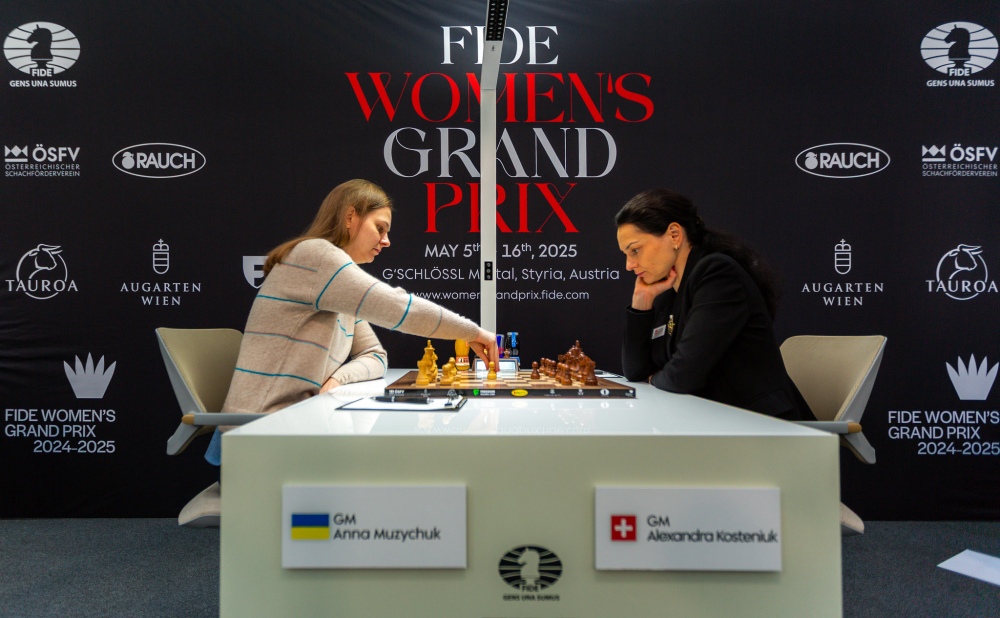
In the matchup of the day, Alexandra Kosteniuk launched an early surprise against Anna Muzychuk by essaying the French Defence. However, in the Winawer Variation, Muzychuk staged her own surprise with an early 5.Qg4. On move six Alexandra deviated from the most popular continuations and opted for 6…d4, a move rarely seen at the top level. Just two three moves down the road, after a 25-minute think, Kosteniuk made a serious error, playing 9…Nd5?
Black should have continued by taking on c3, doubling White’s pawns and then take on e5. Another alternative for Black to consider was 9…b5 which looks even stronger.
As played, White got a chance to pin Black’s pieces and develop at the same time: 10.Bd2 Nxc3 and now, an important intermezzo 11.Rc1! After 11…Bxc3 12.Bxc3 Qb6 targeting f2, Anna responded with 13.Qf4! defending f2 and preserving an extra pawn.
After exchanges on the queenside, the two soon transitioned to an endgame with rooks and queens.
This is the last moment in the game where Black had a chance to put up a stronger resistance. Instead of 27…f5 Alexandra played 27…Rg5? This allowed White to proceed with coordinating her rooks and executing an exchange in the centre after which she was completely winning.
28.Re4! Kb8 29.g3 a5 30.Rec4 Qb6 31.Rd4! Rf5 32.Qd2 Rfxe5 33.Rxe5 Rxe5 34.Rxg4 Rd5 35.Rd4 Rxd4 36.Qxd4 Qxb2 37.Qd8 – White’s queen is completely dominating, and her king is well protected. The situation is opposite for black. On move 46, Kosteniuk surrendered.
An extremely important victory for Muzychuk who ended as the sole leader in the tournament, while Kosteniuk remains on 1.5/4.
The most beautiful game of the day was one between Nana Dzagnidze and Tan Zhongyi.
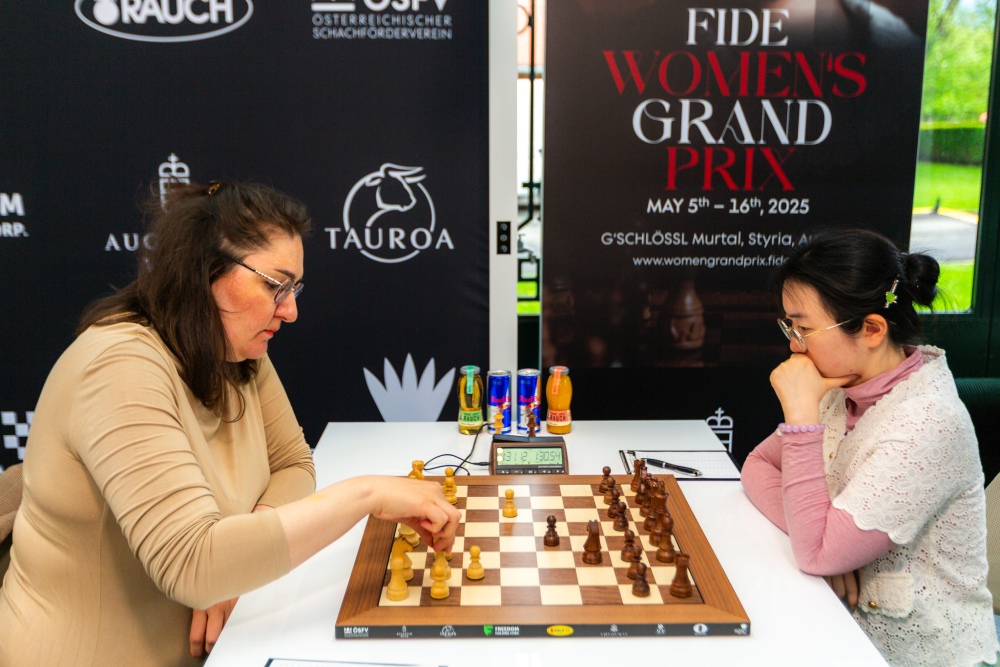
In a solid and well-known line of English Opening, Dzagnidze pressed on the queenside while Tan countered in the centre. After erroneously trading the light-square bishops, Tan was all but forced to sacrifice a central pawn, which opened space for her rook to join an attack on the white king’s fortress.
Black got her rook into the game and is now going all in, trying to stun White. She just played 21…g5
22.g4! The only move! What is unusual is that this move defied conventional wisdom – don’t open your king’s fortress, let alone do that while at the same time giving up the pawn!? And while this all is true and that is exactly what Nana did in this position, also – she is opening the g-file for her own attack on Black!
22…Qxg4+ 23.Kh1 Kg8 and now comes another deep move by Dzagnidze – 24.Bh8!
Tan’s position is extremely difficult to defend and in a few moves, the former World Champion was completely lost.
After three long draws, a well-earned win for Dzagnidze, now on 2.5/4. Tan, after starting with two wins, has now lost two in a row and is on 50 percent.
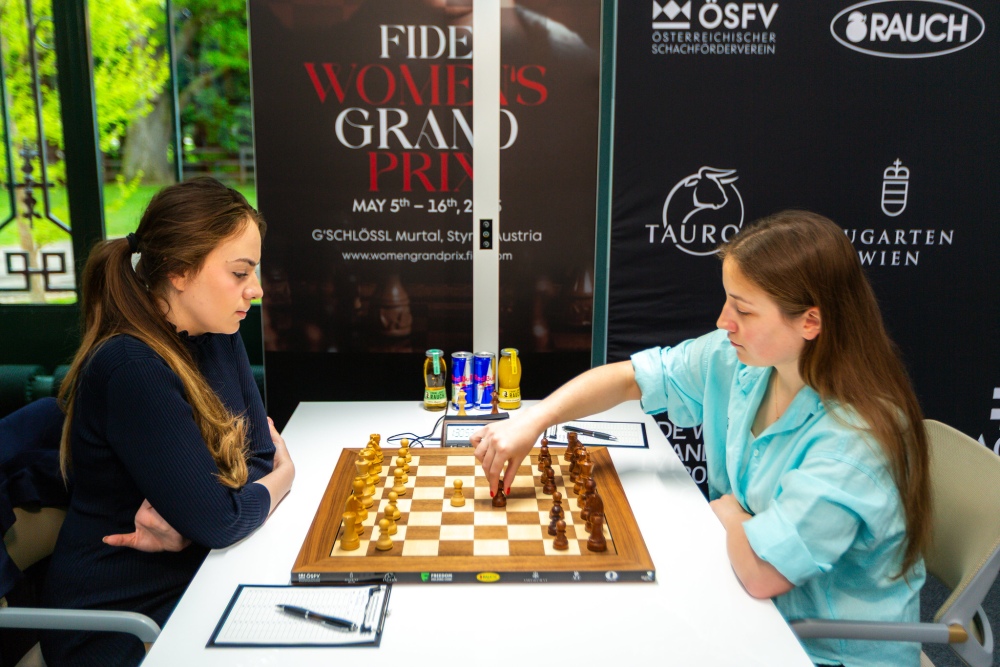
Olga Badelka also scored, beating Nurgyul Salimova. In a well-known line of the Italian, playing as White, Salimova went for a position with an isolated pawn in the centre. She soon gave up that central pawn and got almost sufficient compensation in the form of two bishops. Following a tactical battle in the centre around moves 19-25 Salimova got back into the game.
The position was equal but, under time pressure, Salimova made a mistake by allowing Black to penetrate her back ranks with 28…Qe2, which led to White’s demise.
An important comeback for Badelka following two loses. She is now on 2/4. Salimova continues her winless streak, with 0.5/4.
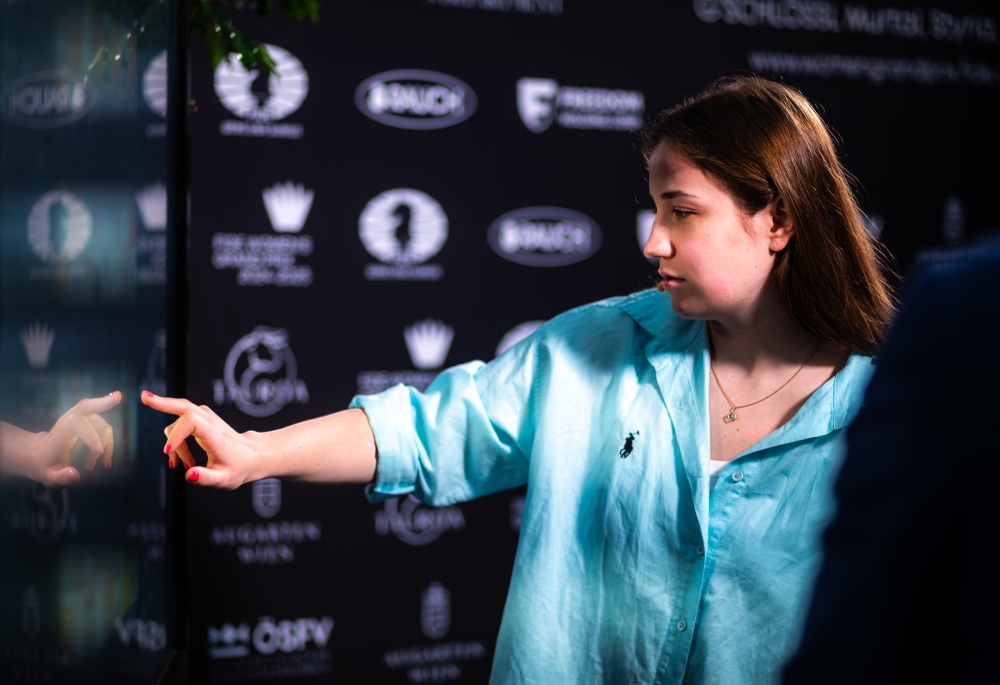
Vaishali Rameshbabu has managed to stage surprises in all three previous games. This time around, playing against Mariya Muzychuk, the Indian seems to have been the one who was surprised as she decided not to play the most obvious move.
In a popular line of the Sveshnikov Sicilian, Vaishali had an early chance to pick up a pawn but did not go for it. Vaishali spent just under 30 minutes thinking before deciding not to take the free pawn (which was the strongest continuation) but played 16.Ne3 instead. This allowed Mariya Muzychuk to equalize first and then to grab the initiative.
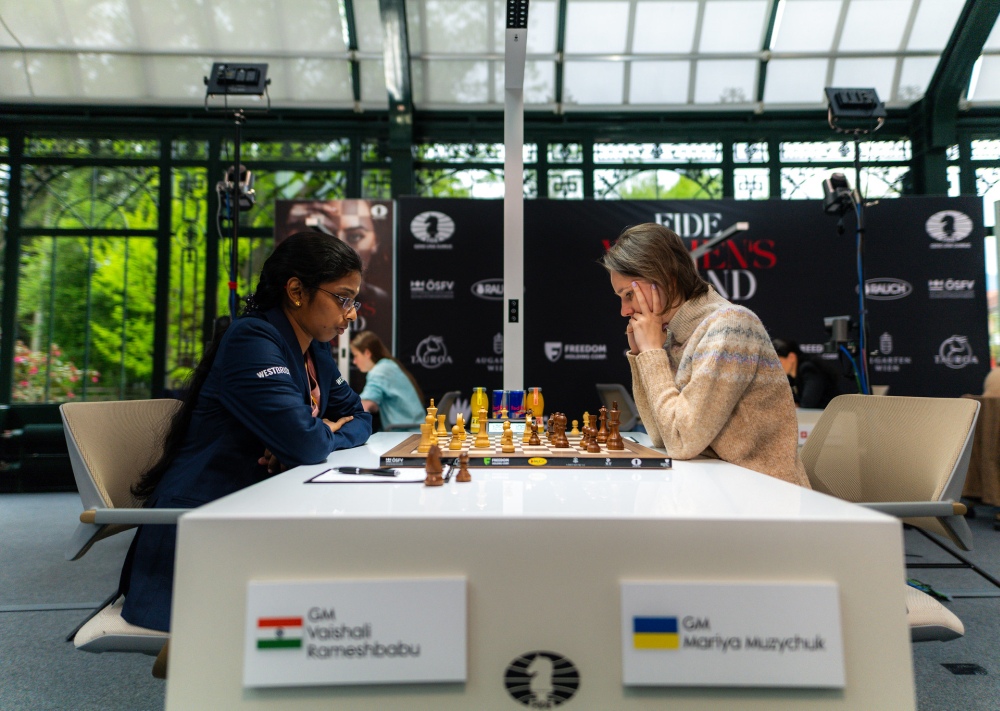
Despite pressing hard on the queenside and pushing White’s pieces back, Mariya surprisingly decided to settle for a draw by a threefold repetition. This is the second time in the tournament (previously it was against Salimova), that Muzychuk opted not to press.
Vaishali is on three points, just half a point behind the leader, Anna Muzychuk. The former world champion Mariya Muzychuk is on 1.5/4, with one loss and three draws.
The game between Javakhishvili and Zhu Jiner looked set to end quickly in a draw, but instead turned into the day’s longest battle.
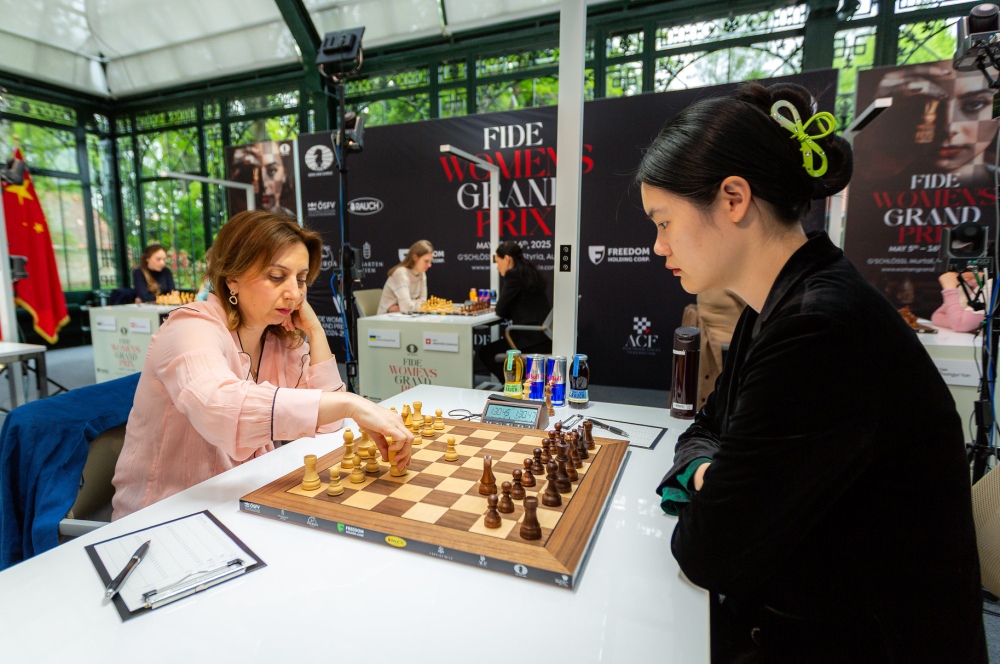
White (Javakhishvili) emerged slightly better in a well-known line of the Queen’s Indian Defence, but the position was largely even.
The first big swing happened late in the ending, when Javakhishvili made a grave mistake that cost her game.
Black just moved her king to g6. In this position, White should have just proceeded with 46.Rd1 (46. Rc3 and 46.Rd8 were also possible). Black has no better option than to move her king back to f6, and it would have been a draw. If Black takes the pawn on e3, White has a check on d6 with a rook and then it would have either been a draw or Black would have to risk everything by abandoning the kingside.
Lela, however, played the natural-looking but erroneous 46.Bd5? completely missing 46…Bb4! threatening with Be1#. Suddenly White found herself in a completely lost position as 47.Rd1 fails to 47..Re2! winning an exchange. Lela opted for 47.Bg2 but soon lost a kingside pawn and – despite further resistance – could not change a thing.
With two victories in a row, Zhu Jiner has now made a comeback from a poor start marked with two defeats. Javakhishvili remains on 1.5.
Standings after Round 4:
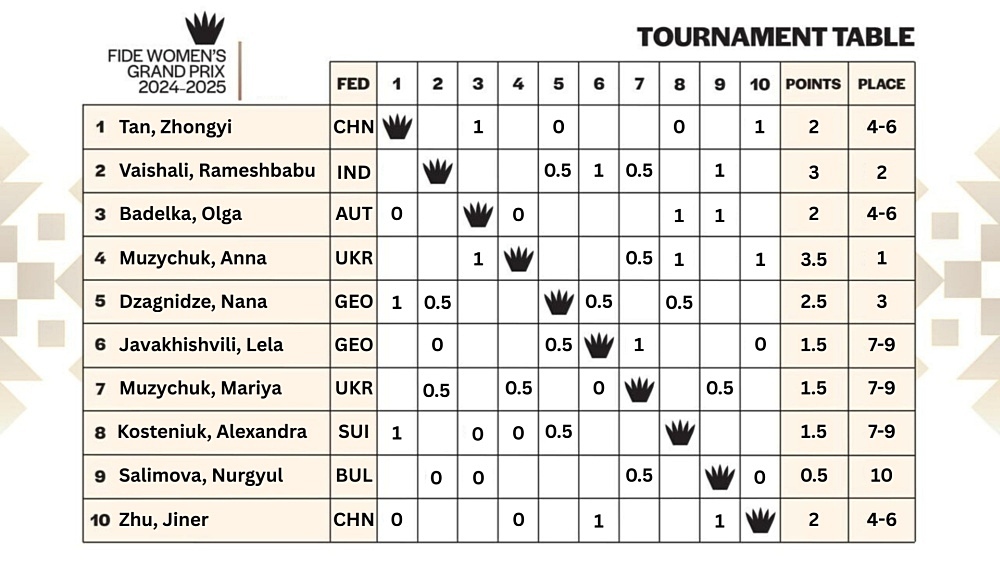
Round five starts on Saturday, May 10, at 3PM CET
Round 5 pairings:
Mariya Muzychuk – Nana Dzagnidze
Zhu Jiner – Vaishali Rameshbabu
Olga Badelka – Lela Javakhishvili
Alexandra Kosteniuk – Nurgyul Salimova
Tan Zhongyi – Anna Muzychuk
Written by Milan Dinic
Photos: Przemysław Nikiel
About the tournament:
The tournament in Grosslobming is the final in a series of six tournaments in the 2024/2025 Women’s Grand Prix cycle.
Format: Ten players play a round-robin tournament (9 rounds). The time control is 90 minutes for the first 40 moves, followed by 30 minutes for the rest of the game, with an increment of 30 seconds per move starting from move 1.
Prize fund: €120,000 distributed among 10 participants based on placement (see Regulations)
For more information about the event, visit: womengrandprix.fide.com/
About the Women’s Grand Prix series
The FIDE Women’s Grand Prix (WGP) Series 2024–25 stands as a premier series in the international women’s chess calendar. In its seventh season, it serves as one of the crucial pathways to the Candidates.
The event comprises six tournaments, hosted in different countries: Georgia, Kazakhstan, Monaco, Cyprus, India and Austria.
The scoring system is conceptualised in a way that favours not just tournament victories, but consistency across events. Each player has a right to play in three out of the six events in the series.
The event is part of FIDE’s World Championship cycle, and the top two players in the WGP will qualify for the 2026 Candidates tournament. The winner of the Candidates will become the challenger to the current Women’s World Champion Ju Wenjun, who successfully defended her title against Tan Zhongyi in their 2025 match.



